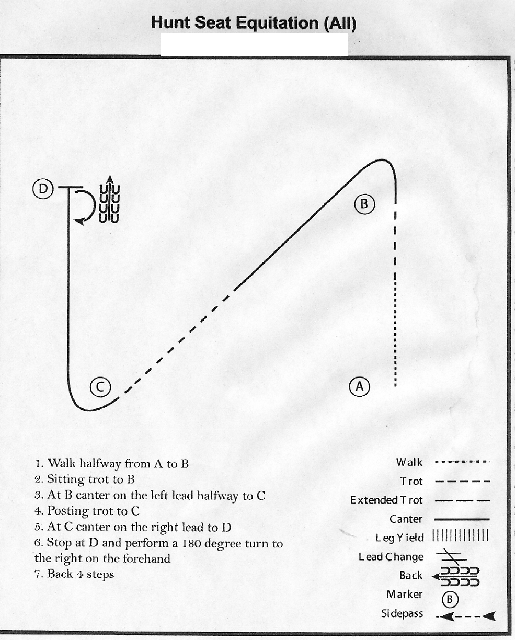So this has been bothering me quite a bit. So much so, that I decided to resurrect my blog. In the past couple of years I have acquired some stock horse judges' license. That said, take notice of the posted pattern. Since I judge with at least one other judge at some of these 'stock' horse shows, I am not always the judge to supply the patterns. I do love building patterns and I don't use those online services that spit out whatever required pattern without much thought. I like to think of the division (amateur, novice, junior, etc) and then take note of the required elements and build a pattern from there. Unfortunately most of the people I judge with that provide patterns, not only use these mindless online services to print out whatever but they, for the most part, do not have a background in hunters.
Take note again of the pattern. Would your hunter mount be able to execute this with such acute angles at the markers?
These patterns seem to be quite popular amongst the stock horse crowd for hunter equitation. Now the only horse that can really execute this pattern is a western pleasure horse in english tack. I know this, you know this and yet, the pattern is used quite often. AND, quite often, I'm not seeing a hunt seat rider but rather a western pleasure rider on a western pleasure horse executing these patterns. It is ridiculous.
This pattern is not conducive to showing the quality of a hunt horse' gaits and strides. It does not showcase a horse that can swing freely from the shoulder in the trot along with a rider that can hold their weight in the heel while properly using their back and hips to sit the trot with impulsion. It does not promote a graceful, sweeping turn at the canter and most of the time it is set up with the markers so close, you have no room for proper transitions.
I feel this type of pattern should NOT be used whether at a 4-h show or a 'stock breed' show. This type of pattern with these acute turns do nothing to promote a graceful, easily guided and free flowing hunter type horse. Equitation aside, the pattern should not be the focus as it so often is at 'stock breed' shows. I don't care if you ride a stock breed or a thoroughbred. It's hunters people!! Graceful, sweeping turns and ground covering strides from flat kneed horses is what we expect in the hunter world, stock breed or not.
After seeing this, or a close facsimile of such a pattern, I wonder why I am judging shows that seem to have no problem with this. Nor do they recognize that it does nothing but give a western pleasure horse in english tack the advantage since the execution of the pattern is heavily weighted even in the equitation class.
I wonder is it me? Should I continue judging this or walk away from the stock horse world? Would walking away make me part of the problem of the stock horse world of judging?
I believe the latter.....for now, I'll stay. I feel I'm helping to make a difference in the stock horse world, albeit small.
Next time, my fellow judge decides their patterns are best, I'm going to exert my opinion on the hunter patterns if they look like this.
What have you experienced? Do you show in stock horse breed shows? What do you think I should do when presented with patterns such as this? Or do you even see a problem? Let me know! The blog is back and so am I.
2 days ago










